The tenth Automotive Logistics & Supply Chain Mexico conference has wrapped up, after industry leaders, logistics experts and automotive pioneers gathered to discuss the latest trends, challenges and innovations transforming Mexico’s automotive supply chain. That transformation comes at an uncertain time for the North American supply chain, with shifting global dynamics and a pivotal US election.
19th November
Red Sofa interview: MG México’s Rubén Ballesteros
MG México has been expanding and building out its supply chain by tailoring it to the Mexican market.
In a new Red Sofa interview from Automotive Logsitics & Supply Chain Mexico 2024, its head of logistics, Rubén Ballesteros, spoke to Automotive Logistics’ chief content officer about the company’s ability to make flexible decisions faster and its future plans in the country.
Watch the full Red Sofa interview with MG México’s Rubén Ballesteros now!
15th November
Wrap-up day 2
On the second and final day of the conference, Christopher Ludwig, chief content officer, Automotive Logistics recapped what has undoubtedly been the largest and most impactful Automotive Logistics and Supply Chain conference ever held in Mexico. With over 660 attendees, this milestone 10th edition brought together industry leaders, innovators, and stakeholders to shape the future of Mexico’s automotive logistics landscape.
“We invited students from local universities to not only learn but challenge industry leaders on how to make this sector more attractive, inclusive, and ready for the future,” said Ludwig. ”It’s about preparing the next generation to be the innovators and entrepreneurs who will lead this transformation.”
15th November
Red Sofa interview: Lizette Gracida, Toyota Mexico
The 10th ALSC Mexico conference may be over, but the content is not! We will continue to update this Recap blog with more news, features and exclusive Red Sofa interviews from the event, so keep your eyes peeled!
In the meantime, check out our first Red Sofa interview from the event, with Lizette Gracida, senior director of external affairs and trade compliance at Toyota’s Mexico division. While acknowledging Mexico’s historic role as a nearshoring hub, Gracida stressed the need for comprehensive strategies to fully capitalise on its opportunities.
14th November
Final session: Empowering logistics talent
The final session of the ALSC Mexico 2024 conference delved into the high-demand roles, essential skills and retention in Mexico’s automotive logistics sector. Joining Christopher Ludwig on stage were Ricardo Ortega Márquez, senior manager, purchasing, customs and logistics at KIA México, Ruben Lopez Cha, production control & supply chain group manager at Toyota Motor Manufacturing and Javier Valadez, director of operations at PACCAR Mexico.
The session started with each speaker sharing their professional journey in the logistics space while also highlighting how their organisations are structured to manage supply chain complexities, nearshoring and international coordination.

The speakers further spoke about the vital role of specialised skills within logistics, particularly in light of the complexities introduced by international trade agreements and digital transformation. Márquez emphasised the importance of compliance roles, noting: “With the complexities of USMCA, we need people who can deeply understand these agreements to navigate the challenges effectively.” He further stressed the strategic necessity for roles that bridge traditional logistics functions with modern compliance demands, reflecting on how his organisation has evolved to meet these needs.
Addressing the impact of nearshoring on the logistics sector, the speakers acknowledged the growing demand for skilled logistics professionals. Valadez highlighted the importance of fostering a workforce capable of managing the increased complexity and volume of operations resulting from nearshoring trends. “Nearshoring has amplified the demand for skilled professionals who can manage cross-border logistics efficiently,” he explained.
The conversation also delved into strategies for attracting and retaining top talent in a competitive landscape. All three speakers shared their approaches to creating engaging work environments and promoting a culture of continuous learning and adaptation. “We focus on creating an environment where continuous improvement is part of the daily routine,” said Lopez Cha.
Moreover, each speaker discussed the importance of aligning company values with employee expectations to enhance job satisfaction and loyalty. Márquez pointed out: “Aligning our operations with our employees’ values is crucial for fostering a committed workforce. We’re not just focusing on technical skills but also on nurturing a workplace where everyone feels valued and part of a larger mission.”
The session concluded with a forward-looking perspective on the necessity of preparing the workforce to embrace digital tools and adapt to rapid changes within the industry. “As we integrate more digital solutions, our focus is on upskilling our workforce to ensure they are not only comfortable but proficient in using these new technologies,” Valadez noted.
14th November
After a set of some insightful sessions and keynotes on nearshoring, supply chain and more about Mexico’s economic growth, we are now breaking for lunch, sponsored by Ryder.
We will be back for our last session on all things talent, skills, supply chain complexities and international coordination. Stay tuned!
14th November
Building a stronger local supplier network with a 360° view
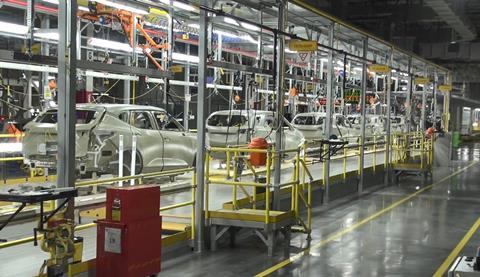
As carmakers old and new in Mexico increase production and gather suppliers closer to them, they are reliant on dependable and flexible logistics services to keep inbound parts and outbound vehicle deliveries on track, not least because of the ground that needs to be made up in terms of infrastructure.
Mónica García is director of global procurement and supply chain at GM Mexico, the carmaker with the biggest output in the country and a 22% increase in production between January and October this year (746,400 units). GM Mexico has spent the last decade or more locating suppliers closer to its manufacturing plants and the nearshoring strategy succeeded in developing a strong supply base in Mexico, reducing the risk and the complexity of logistics. That is dependent on transparent relationships with its suppliers and service providers to ensure it delivers on its product expansion, including in the transition to EVs. GM has introduced three EVs this year: the Blazer, Equinox and Hummer. To retain its lead position in output GM is working to build a resilient supply chain and secure logistic capacity, according to Garcia. “We want not only to build the vehicles but to ensure that we can deliver those vehicles to our customers in an efficient way,” she said.
The same goes over at Nissan, just behind GM in terms of output so far this year (575,400), which is intent on nurturing reliable long-term partnerships, according to Dayan León, deputy director of parts logistics, Nissan Mexicana. León said working together to improve transparency meant bolstering the supply chain both ensuring stability and preparing for unforeseen disruption, ensuring when something did happen, each supply chain partner was aware of it and what to do next. Together we can create that stable supply, looking for the right buffers when and where we need to have them, he said.
Read more: Putting the right tools in the right hands at Nissan Mexicana
GM has increased its purchase value in Mexico over the last decade and this year is buying around $28 billion worth of parts from 650 tier one suppliers based there. This is part of its strategy to build a resilient supply network in North America said García. Her message to those suppliers was that they need to invest in innovation and new technologies to implement safety features in their equipment. They need to apply the lessons learned to ensure to secure the quality of our products and more importantly, good demand planning.
Nissan has also built a strong supplier network and is looking beyond the tier ones to nearshore suppliers along the tier-n chain to ensure greater stability. That security of parts supply also relies on redesigning the logistics network to get the most of the available infrastructure in place, according to León. That needed the engagement of expert teams openly sharing ideas to solve problems co-create new flexible services from a 360-degree view.
“We dare to test, fail, unlearn and try once again,” said Leon. “You cannot only have the transport, you need the customs and the port, you need to have everybody looking for a solution. The teams are brilliant and they start creating something very new that works and everyone agrees on. That’s what we are doing right now, creating together.”
14th November
Optimising cross-border automotive logistics in North America
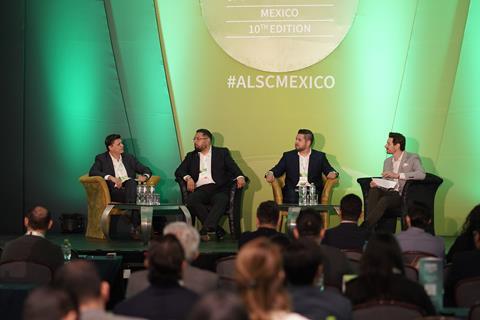
With demand for cross-border and land-bridge services on the rise across road, rail and sea, the next panel of experts this morning are exploring how manufacturers, logistics providers and border agencies are working to improve international parts flows and investing in facilities, fleets, technology and partnerships.
Hugo Villicaña, transportation manager at Brose North America, Jesús Ojeda, EVP Mexico, Uber Freight, and Jesús Osuna, road freight regional director for Americas at Hellmann Worldwide Logistics, have taken to the stage to discuss the challenges and strategies in cross-border logistics within the North American automotive industry, particularly focusing on the dynamics between Mexico, the US and Canada.
The panellists highlighted increasing demand on logistics infrastructure at border crossings like Laredo, Texas, with congestion impacting efficiency. New developments, such as nearshoring and the rise in imports from Asia, are reshaping logistics needs.
Infrastructure and capacity remain challenges in Mexico, with significant constraints in warehousing, customs processing and port congestion, and road infrastructure, according to the panellists. There are also continuing challenges around driver shortages creating barriers to seamless flows across the border.
Read more: Navigating cross-border logistics challenges in complex automotive supply chains
Jesús Ojeda, EVP Mexico, Uber Freight said: “Just this week we have some incidents in Nuevo Laredo, some protests that are blocking the roads and the way to the Mexican customs compound.”
He added: “Everything is about communication between the troopers and customs broker and the transportation companies in order to react and move into different ports.”
Download our latest 68-page business intelligence report, the North American Automotive Logistics Market Report 2025-2035, to obtain clear insight into the outlook for the automotive logistics market and the leading companies operating within the market space.
With delegates optimistic about the continuing trend of nearshoring, there needs to be a balanced logistics network to avoid overloading border facilities, according to the panellists. Strategic network designs, such as centralised management of transportation and supply chains, are becoming vital for companies like Brose to streamline operations and reduce costs.
14th November
We are taking a short networking break after the first two sessions which focused digitalisation of Mexico’s supply chain, evaluating supply chain capacity and AI.
We will be back soon!
14th November
Localising the electric transition in Mexico
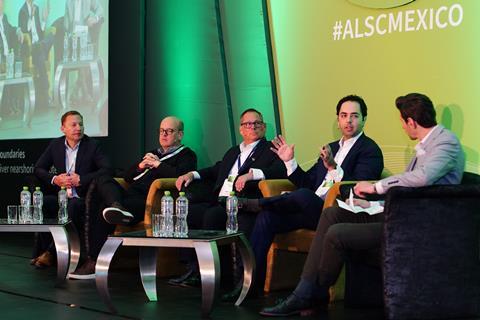
The transition to EV production is happening now in Mexico, with investments from established carmakers such as BMW, GM, Ford and Volkswagen, and the influx of imported EVs from the likes of BYD, Geely, MG and SEV Auto. That demands a deep dive on supply chain and logistics planning. In the second session of day two speakers from OEMs Paccar and SEV Mexico joined those from logistics providers DB Schenker and DP World to talk about what the country had to do to make the transition to EV a success.
Javier Valadez, director of operations at Paccar Mexico, said the commercial vehicle maker was the first to build fully electric trucks in Mexico at its plant in Mexicali, Baja California, starting in 2019, and it counts Mexico’s largest freight transport company Trayecto as a customer.
Valadez outlined the different options for sustainable transport, between electric or alternative fuels, including compressed natural gas (CNG), which Trayecto is using to cut emissions by 40% compared to diesel. Paccar is also part of a trial with Toyota Logistics Services at the ports of LA and Long Beach north of the border using hydrogen fuel cell trucks to move mixed loads inland. Valadez said that the adoption of electric drives or those using alternative fuels depended on whether the transport was required for last mile or longer-haul deliveries.
SEV Auto, which makes electric passenger cars, is planning to start production in Mexico next year, having so far imported EVs from China since 2022, including the E-Wan which is reported to be the cheapest EV in Mexico and will be the first introduced for local production in 2025. Juan Cerdeira, CEO of SEV Mexico, said the EV transition is inevitable and his company had invested into the whole clean technology ecosystem, from the assembly and distribution of EVs, the batteries used in them or for energy storage, as well as the selling of solar panels used to recharge those batteries.
Cerdeira said that over the next five to ten years the battery and drivetrain of EVs will look alike and not be distinguished in the same way as internal combustion engines (ICE). However, he said that as more players enter the market, those batteries will start to get more complicated and logistics providers will have to be ready for that.
Christian Moser, global solution manager for eMobility at DB Schenker (currently in the process of becoming part of DSV) said that those new entrants needed to be aware of the local environment in Mexico and that a cut and paste attitude to production did not always work in different settings with different circumstances.
Read more: DSV’s takeover of DB Schenker to bring strategic benefits, says Greg Slawson
Moser acknowledged that 90% of the suppliers to EV production were the same as for ICE but he said there is a strong drive for localisation in Mexico and during the ramp up of these new-entrant factories there will be a mix of global inbound parts logistics with the growth of localised services. “For that, I think the key lesson should be you really need a resilient, flexible supply chain for the inbound to ensure a proper ramp up, to ensure on-time serial production to make everything possible,” said Moser, adding that required a mix of local and global logistics partners and a flexible system for different transport modes and warehousing.
Looking at the requirements for outbound shipments of EVs, DP World’s David D’Annunzio, global vice-president and automotive vertical lead, reminded delegates of the 30-50% weight increase when shipping of EVs and the fact they are classed as dangerous goods because the lithium batteries in them. He pointed to the advantages of shipping EVs in containers, which DP World offers, and which causes less disruption should charge deplete during the journey than traditional vehicle transport by ro-ro.
Cerdiera said that a focus on gravimetric energy in batteries, delivering the same amount of energy in smaller and lighter battery, would pay dividends not just from a logistics perspective. He also said there were a range of logistics questions related to the fact an EV has 40% fewer moving parts than an ICE vehicle and they cut maintenance costs by 30%. In terms of the global battery chain, 90% of the batteries currently made are coming from China but as regional value content builds in Mexico toward the trade agreement review with the US in 2026 (USMCA) Cerfiera said there would be a tsunami of supply chain opportunities for battery companies over the next two years.
14th November
“We cannot fake digitalisation”
We kicked off the first session with some insightful discussion with Raul Gamboa, head of logistics, production control and production systems at BMW Group Plant San Luis Potosí, Daryl Knight, chief commercial officer at ProTrans and Brandon Kennedy, global managing director, high-tech & industrials at Airspace on the transformative role of digitalisation in logistics operations and how their organisations are harnessing digital tools to refine and advance their logistics frameworks.
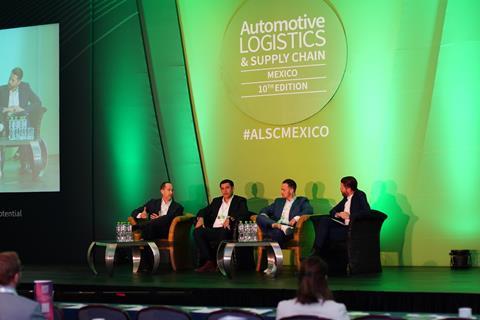
Gamboa spoke about BMW’s efforts towards becoming a paperless operation, emphasising the environmental and operational efficiencies this shift promises. He detailed their strategies for improving data visibility, and BMW’s goal to streamline data presentation and reduce physical paperwork drastically. Gamboa further spoke on the authenticity of digitalisation within the context of BMW’s operations, emphasising the importance of genuine digital integration over mere appearances. He highlighted the common issue where companies might present sophisticated dashboards and digital tools, which look impressive on the surface but are underpinned by manual data entry processes. Gamboa said: “We cannot fake digitalisation… we may have very fancy and nice dashboards, but behind that, there’s somebody still typing the numbers.”
Read more: How BMW and Nissan are making Mexican networks flexible for changing market demands
Talking about capacity and visibility in logistics, Knight highlighted the importance of accurate, front-end data for enhancing decision-making processes at the back end. “The better that we can provide accurate, reliable front-end data… the more reliable the data and decision-making could be on the backend,” he explained. This focus is crucial for logistics providers to build strategies that respond effectively to customer needs and industry demands, he highlighted.
Additionally, Kennedy focused on the critical balance necessary between automation and human intervention within supply chain processes. He stressed the significance of placing the right people in pivotal roles to ensure effective decision-making, especially as industries face capacity constraints and look to scale operations. “We need to have the right people in the right positions to make the right decisions,” Kennedy noted, underscoring the importance of strategic alignment in the era of nearshoring and increased digital reliance.
All three speakers collectively highlighted the urgency for companies to adopt digital strategies adeptly to navigate the complexities presented by the global logistics landscape.
14th November
Data snapshot: Investment in nearshoring continues in Mexico’s automotive supply chain
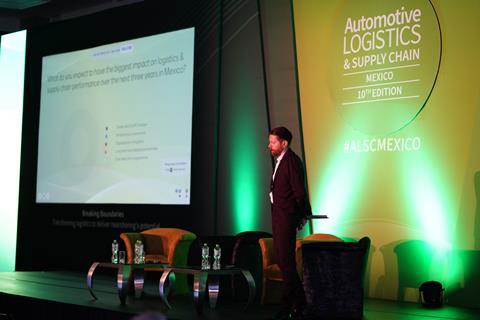
At the opening of the conference yesterday, delegates voted on the trends they’re seeing in nearshoring, investment, operations and opportunities for growth in the Mexican supply chain.
Despite the upcoming Trump Administration potentially raising tariffs on Mexican imports into the US, more than three quarters (78%) of delegates reported that there is current investment in nearshoring. Around half of the logistics experts (49%) said there is currently “small to moderate investment” in nearshoring, while a further 29% said there is “significant” investment in nearshoring in Mexico.
Of the remaining delegates, 16% said there is little or no investment in nearshoring, while 4% found a small to moderate contraction and 2% found a significant contraction in the trend.
To gain more insights on the polling results, read the full article here.
14th November
Welcome to day 2 of the Automotive Logistics & Supply Chain Mexico Conference!
It’s the second and final day of the ALSC Mexico 2024 conference! Today, we will dive deeper into key topics which are shaping the future of Mexico’s supply chain, from accelerating digital transformation to boosting port efficiency and navigating talent retention.
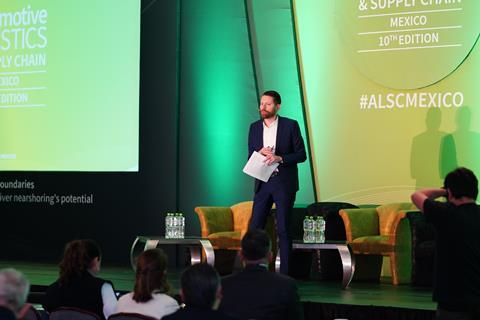
In his welcome note at the conference, Automotive Logistics’s chief content officer Christopher Ludwig highlighted the overarching theme of capitalising on nearshoring potential, particularly within Mexico’s logistics sector. He outlined the discussions centred on enhancing logistical frameworks to accommodate growth and address uncertainties, such as those experienced at borders and ports. He also emphasised the increasing reliance on digital strategies to improve visibility and efficiency across supply chains, hinting at the broader adoption of artificial intelligence and data analytics to preempt and mitigate operational challenges.
The note perfectly ties in with the first session on ’Accelerating the digital supply chain revolution in Mexico’ with our panel which will include Raúl Gamboa, head of logistics, production control and production systems at BMW, Daryl Knight, chief commercial officer at ProTrans and Brandon Kennedy, global managing director, high-tech & industrials at Airspace and AL’s chief content officer Christopher Ludwig.
We will also be hearing more on strategies for cross-border logistics with experts including Brandon Park of Volkswagen, talent upskilling for the digital age with Ricardo Ortega Márquez from Kia Mexico and Ruben Lopez Cha from Toyota and much more!
Stay tuned for live updates and insights from today’s sessions!
13th November
End of day 1 and time for some tequilas at the Gala Dinner
After a full day of insightful discussions and knowledge sharing on nearshoring, cross-boarder transformation, supply chain challenges, security and the future of logistics in Mexico, the 10th Automotive Logistics & Supply Chain Mexico Conference is hosting its Gala Dinner. Christopher Ludwig welcomed industry leaders, decision-makers, and innovators at the beautiful Espacio R. who gathered to celebrate Mexico’s automotive logistics achievements and discuss future opportunities with some tequila, margaritas and delicious food.
Ludwig also took a moment during the exclusive Gala Dinner at Espacio R to reflect on the day’s highlights and the energy among attendees.
Watch the Day 1 wrap-u p video here!
13th November
Final session: Embracing nearshoring opportunities
As businesses increasingly look towards nearshoring as a strategic advantage, recent discussions have shed light on how Mexico is poised to capitalise on its geographical and economic ties with North America, particularly under frameworks like the USMCA. Our chief content officer Christopher Ludwig began the final session by emphasising the importance of addressing investment needs in critical areas such as rail and cross-border systems, while also acknowledging the industry’s resilience amidst uncertainties due to trade and tariff volatilities under USMCA.
Joining him on stage were Lizette Gracida, senior director of external affairs & trade compliance at Toyota México, Claudia Ávila Connelly, international trade, nearshoring & economic development expert, Francisco N. González Díaz, executive president at Industria Nacional de Autopartes, A.C and Victor Salazar International CCO at Trayecto.
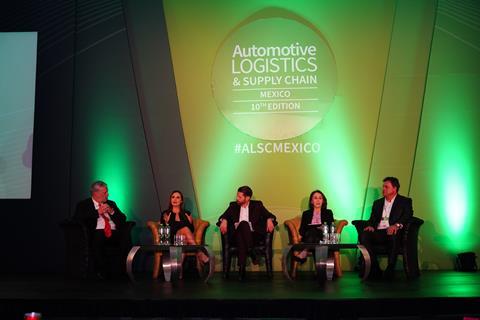
Echoing Ludwig’s sentiments on the strategic importance of Mexico’s position, González highlighted the benefits of nearshoring, driven by the USMCA and Mexico’s proximity to the North American market. emphasised the necessity for a robust logistical, technological, and governmental ecosystem to leverage these advantages fully. He noted, “To be truly competitive, we need a logistical, technological, and governmental ecosystem that is fully aligned.”
From the perspective of the automotive industry, Gracida discussed how geopolitical shifts and the stipulations of USMCA influence nearshoring. She highlighted the ongoing shift towards investing in existing facilities (brownfields) rather than new projects (greenfields), pointing out the strategic yet cautious approach businesses are taking. Gracida remarked, “Nearshoring is not a new phenomenon for Mexico nor for the auto industry… the geopolitical situation between the US and China, and the USMCA… promotes a further integration of the value chain in the region.”
Read more: Toyota announces $1.4 billion investment in Mexico
Salazar spoke on the direct impacts of nearshoring on the transportation and logistics sectors, noting significant growth beyond just automotive, extending into electronics and appliances. “It’s real. As a transportation company, we connect the dots… and we have seen how the automotive industry has grown in Mexico,” Salazar shared.
Finally, Connelly brought in the government’s perspective, advocating for a unified vision that includes both private and public sectors to facilitate economic growth and enhance investment security. She urged for continuous dialogue and collaboration to effectively address and capitalise on nearshoring opportunities. “The intention of the government is there, and the big issue is to have the parties get together in an open dialogue, not fighting each other,” Ávila stated.
Ludwig concluded the session with a question to the panel on the nearshoring picture in Mexico and whether they are ultimately an optimist and a pessimist and why. The panel expressed optimism citing future opportunities, benefits of cross-country collaboration and economic interdependency between the U.S. and Mexico as a continuing force for trade.
13th November
It’s time for the second networking break where delegates continued discussing key takeaways from the event and also checked out the sponsored exhibition before we came back for our last session on ’Aligning government and the supply chain for Mexico’s automotive growth’ and head to the Gala Dinner at the Espacio R.!
13th November
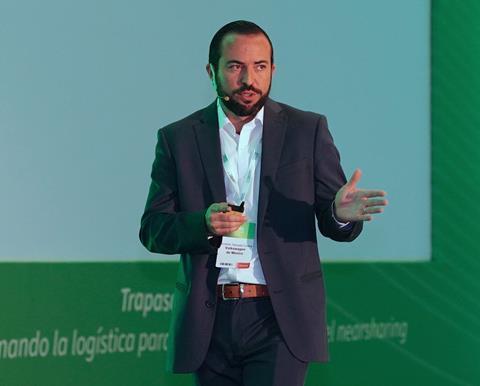
Matching a legacy of talent with the latest technology at VW de México
Mexico’s highly educated and talented labour pool gets high praise at every ALSC Mexico event and this was a key topic for VW de México’s head of logistics planning, Bernardo Taboada Cortina.
“Human capital is one of the things that we are focused to get success in our operations,” said Toboada. In logistics VW de Mexico has an average of 16 years of experience and seniority which helps give it stability and robustness in its processes. But it is also important to have a balance of those experienced professionals and the new pool of young talent VW wants to attract, according to Toboada, and that requires that the carmaker clearly identify the merits of the career path available to them, especially when it comes to logistics.
“For the last two years, so we have changed more than 20% of the management positions and all of them have been taken by our talented logistics pool,” said Toboada. To support that move, VW has created projects for talent development, such as one called Eagle of Trust. He explained that all of VW de México’s logistics departments sit together at least once a month, including management, with the goal of identifying cross-departmental ideas sharing and personal development that can put those people for on a management career path.
Volkswagen’s Puebla facility has a 60-year history which gives it something of a cult status in the automotive industry, according to Toboada. There is a legacy of logistics expertise there, which supports stability but which is not resistant to the introduction of new technology. In fact, VW de México recognises the advantage of equipping the logistics professional with the latest digital tools that help them preventive disruption rather than simply react to it. As has been discussed previously, the carmaker is using predictive analytics artificial intelligence (AI) to help in the transformation of the supply chain landscape in Mexico.
Toboada also points to 20 years of warehouse automation across two facilities at Puebla that store up to 75,000 small and large containers. According to Toboada, this has given VW de México a lead on the development of in-house processes automation. Combined with its legacy of talent and the encourage of the next generation, the carmaker is well placed to make its inbound flow of material resilient to disruption, something helped by a strong localised supply chain in which 78% of the inbound parts and material volume comes from suppliers within the 30km radius of the plant. That, said Toboada, makes logistics and production flexible and robust when disruption occurs.
13th November
Accelerating vehicle supply chain dynamics
We are back from lunch to another insightful session with key leaders including Hector Martinez, export sales & CBU logistics department head at Honda de México S.A. de C.V., Carlos Eudave, senior manager, finished vehicle logistics at Nissan Mexicana, Roberto Zavala, vice president Mexico operations atWallenius Wilhelmsen and Kaizad Dalal, head of automotive – Mexico at Maersk who spoke about the pressing need for accelerating the vehicle supply chain and shipping and capacity management.
Martinez emphasised the critical role of rail transportation in maintaining efficient operations, particularly under pressure. He noted, “Our key driver is the railroad… We need to move vehicles really fast, and rail transportation is where we are having all our shipments.” Martinez also stressed the importance of swift and effective processes, stating, “We need to have fast processes… We need to get support of our purchasing team in order to make everything fast.” This reflects a broader need for speed and efficiency across the industry.
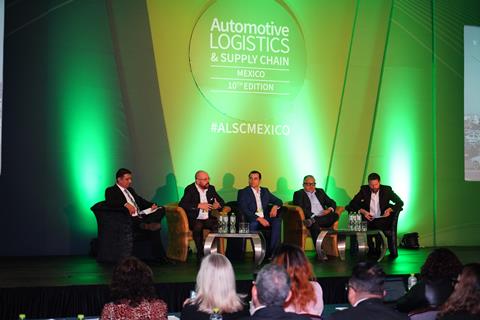
Eudave detailed the adaptive strategies implemented to handle disruptions in logistics, pointing to the necessity of diverse shipping methods. “We needed to adopt a lot of different shipping ways… to cover the market demand,” he shared, highlighting the dynamic adjustments needed to ensure continuity and capacity in vehicle logistics.
Zavala discussed the resilience built into their logistics network, particularly how they’ve managed increased demand and diversified port usage to improve stability and throughput. “We built resilience into the network and now more volume is going through the network than in 2023,” Zavala explained, indicating a successful strategic shift towards more decentralised port operations.
Dalal introduced innovative solutions, particularly the adoption of containerisation for vehicle transport, which he sees as a growing trend. “Thinking inside the box… Cars in containers is a permanent solution,” he stated, suggesting that such innovations are set to become a standard practice due to their efficiency and reliability.
The focus was clear: embracing digital solutions, optimising infrastructure, and maintaining strong partnerships are crucial for navigating the complexities of global supply chains and leaders and decision-makers are collectively driven towards enhancing the efficiency, reliability, and adaptability of vehicle logistics.
13th November
After a set of some insightful sessions and keynotes on nearshoring, supply chain and more about Mexico’s economic growth, we are going to break for lunch sponsored by Ryder.
We will be back soon with some more insights and sessions. Stay tuned!
13th November

Surfs up for Audi’s supply chain in Mexico
Audi Mexico’s senior director of supply chain, Francisco Bravo Gomez followed closely on the heels of his colleague Dieter Braun to explain more about the carmaker’s joined up supply chain strategy.
He pointed out that Audi Mexico had a very complex supply chain operation covering everything from the inbound movement of materials from its warehouse, through to plant logistics and manufacturing, and the shipment of the finished vehicles both domestically and to international markets. It also has responsibility for collecting all of the parts that are sourced in Mexico for shipment to Q5 production in China. On top of that Bravo’s team manages the supply of spare parts to the aftermarket from its consolidation centre at the plant in San Luis Chiapa.
Managing that complexity in adverse conditions meant working in supply chain and logistics was a lot like surfing, according to Bravo, because you had to be aware of from which direction the next wave was coming.
Picking up on Braun’s earlier comments about the application of Audi’s global strategy at the local level, Bravo said it is very important for the team in Mexico to understand the whole of the supply chain from that global brand perspective and how it is implemented San Luis Chiapa plant – a key location in Audi’s supply chain.
That link in the global Audi supply chain is given added precedence by the fact that Mexico now has free trade agreements with more than 100 countries around the world, which was a major advantage for the Mexico operation according to Bravo.
Bravo highlighted that its operations were supported by the best qualified team, helped by a high level of education in Mexico. “The level of education that we have and the level of specialisation that we have in Mexico is level with the best in the world and we are also working to develop this talent,” he said
Bravo said that Audi Mexico is helping to define Audi’s global strategy from the local level, providing input on Mexican law and how that impacts operations, as well as informing the carmaker on the specific market conditions on North America.
In managing product complexity Bravo is bringing the Audi strategy to bear in daily operations with direct insight into local production control and programme planning.
He said that with that insight it is possible to analyse the supply chain and find where to reduce complexity to make gains in terms of cost and flexibility as well as identifying opportunities to deliver vehicles to the end customer faster.
In terms of Audi’s sourcing strategy, the Mexico division is providing input to Ingostadt on where supplier localisation can improve competitiveness and resilience. Bravo said that bringing more suppliers closer to the plant, including tier-n, equips Audi with more flexibility to react to the well-documented disruptions familiar to the automotive industry right now. Bravo said a localised supply base enabled it to react faster and in a more efficient way.
13th November
Pushing the limits of innovative and sustainable production at Audi

Audi’s head of supply chain, Dieter Braun, told delegates at ALSC Mexico about how central supply chain logistics contributes to the carmaker’s global vision for the industry’s manufacturing and supply chain transformation.
In the third keynote speech of day one Dieter Braun, head of Supply Chain at Audi, talked about the transformation to a more efficient, digital and sustainable supply chain, also considering aspects of EV production across the industry and drew links between the carmaker’s global supply chain strategy and its local approach in Mexico.
The transformation to electrification comes a time of global disruption and Audi, like the rest of the automotive industry, is facing a different set of challenges, which demands a more focused supply chain strategy with faster reflexes, said Braun. Having 100 years’ experience developing cars has until now been an advantage to Audi but that legacy of car manufacturing now faces a demanding transformation with a more flexible approach. This is especially important given the speed at which China has adapted to EV production, both on home turf and in its international footprint, which now includes Mexico.
“We have discussions around whether this or that is the right path, but I will tell you one thing, in China the change to electric cars is being executed more quickly,” said Braun.
Braun said logistics was a function of its supply chain organisation. It created added value and was key to the success of the company in tune with the local environment in which it is making cars. He said logistics has to encompass goals of decarbonisation in material and vehicle transportation, greater efficiency and cost reduction as well as digitalisation, while at the same time building the knowledge, including know how transfer across borders and increase the resilience of the workforce.
In addition, given the global competition and the different crises affecting the global supply chain, Braun said well-functioning logistics helped ensure future viability and guaranteed timely delivery of vehicles to the customer, which was very important.
As part of its comprehensive 360factory strategy for production and logistics, Braun reiterated its guiding maxim that it is pushing the limits of innovative and sustainable production. Braun said that over the last five years a lot of new technology has come to market, such as that used in factory and warehouse automation. “We have to apply those technologies quickly in order to be competitive,” he said, adding that Audi’s supply chain strategy had to align EV manufacturing with the supply chains feeding the new materials into its factories.
For Braun, measuring the implementation of the global supply chain strategy that has been developed to remain competitive in a transforming industry, and identifying the results from it, is critical to have a significant contribution to the ongoing success of Audi’s future.
13th November
State of Mexico: A growing hub for automotive logistics Investment
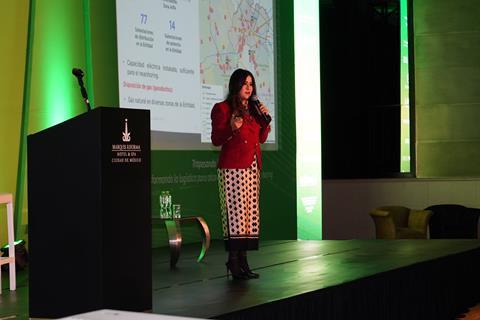
Laura González Hernández, Secretary of Economic Development for the State of Mexico, took to the ALSC Mexico stage to highlight the state’s strong economic and industrial profile, which is grounded in its large population and well-established infrastructure. As Mexico’s most populated state, the region plays a significant role in the country’s economy, contributing 9.3% of national GDP and boasting the highest consumer market share in the country.
She said the state’s location is a strategic advantage for automotive logistics, with a central position and proximity to Mexico City, and two international airports; Felipe Ángeles (the biggest cargo airport in the country) and Mexico City International. This provides a logistical advantage by reducing costs for the transportation of goods both within Mexico and internationally, Hernández said. The state also has extensive infrastructure, with 16,000km of roads, 733km of railroads, and three customs offices, making it a key logistics hub.
Aside from its location, she said the State of Mexico has industrial investment appeal, having secured $7.4 billion in foreign investment in the past year and placing it among Mexico’s top five destinations for foreign investment. Primary trade partners include the US, China, Germany, and Canada. The state is also equipped with energy infrastructure, featuring 75 generator plants, 77 substations, and a robust network of gas pipelines to support industrial needs.
Hernández said the state has nine assembly plants, design centres and engineering centres, with established automotive OEMs and logistics firms including Stellantis, Daimler, Volvo, GM, Ford and Nissan.
”Most importantly, in the government of the State of Mexico, you have allies, you have partners and you have the support of this government that will always walk along with companies,” she added.
13th November
We are now heading for our first networking break where speakers and delegates will discuss trends while having a hot cup of tea/coffee. We will also be checking out our sponsor exhibition to learn more about how they are preparing for the future and current challenges!
And finally, we will be filming some Red Sofa videos with some speakers in the meantime too (stay tuned!)
13th November
Mexico & North America: Vehicle production growth and EV outlook
Gerardo Gómez Gálvez, senior director and country manager, Mexico at data analytics company J.D. Power took to the stage this morning to tell delegates the latest production and sales forecasts for Mexico and North America.
Galvez said the industry is expected to hit 100m units by 2032, delayed slightly by a slower recovery post-pandemic. In North America, Mexico remains a production hub, nearing 4m units in 2024, with potential for further growth given an installed capacity of 5.8m units.

Domestic sales in the Mexican market are projected to reach around 1.5 million annually, with exports, especially to the US, remaining strong due to production surpluses. Additionally, Galvez said Chinese and US manufacturers are considering expanding operations in Mexico, following the recent trends of nearshoring.
“Mexico is still a key production hub for the North America region. We have a big chance to continue growing,” he said. “There are other Chinese brands that are considering building more factories here, and other US brands that are considering expanding capacity here as well.”
Chinese brands have also grown in market share in Mexico. Of course, under a new government in the US, everything has been placed under even more uncertainty – particularly for Chinese OEMs and nearshoring in Mexico.
Galvez said that last year Chinese brands closed with about 10% of the market share, with around 130,000 units. In the year so far, the Chinese brands account for 110,000 units, about 8% higher than the same period last year – and that’s not including new brands that are not reporting yet, which Galvez said could add an additional 50,000 units.
“In the last four years, more than 30 Chinese brands have entered the [Mexican] market,” Galvez said. “There are more than 300 Chinese brands that could come anywhere at any moment, and they have a big, big opportunity, and this could come basically on pricing and everything. There’s a big opportunity just to increase our market in terms of volumes as well.”
In the EV market, Galvez said Mexico is lagging behind the global rise of hybrids and EVs, which are projected to reach 60% of all sales by 2030. In Mexico, however, adoption is slower due to limited infrastructure and incentives, with EVs and hybrids comprising only 18% by 2030.
13th November
“We need more investments in port and rail”
We kicked off the first session with some insightful discussion with Chris Styles, Vice President, Supply Chain Management, North America from Nissan, Helen Quirke, Vice President Supply Chain & Business Development from Canadian National and Tom Kretschmer, Vice President of Sales from Ryder System Inc on Vehicle production and market dynamics in Mexico, nearshoring, partnership and collaboration and capacity management.
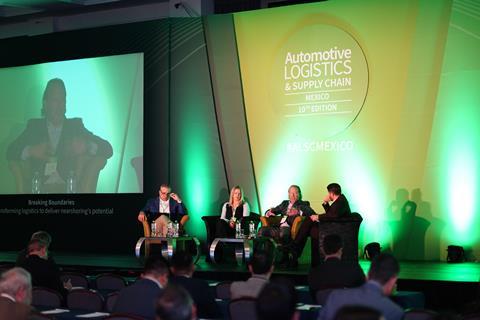
Chris Styles shared insights on maintaining logistics stability despite the current unstable environment. He noted, “There’s a number of key focuses but I guess I would start with just continued focus on capacity confirmations with all of our logistics providers.” He underscored the need for predictability and partnership in navigating the challenges. ”We’re really trying to shift our relationships with all of our logistics partners. Moving away from the traditional kind of transaction-based types of agreements to more of partnership-based agreements, agreements, longer-term agreements where we get the opportunity.”
Styles made a note on the need for more investment in ports and rail. ”We are seeing it with our railroad partners but you know, to me finding ways to go ahead and increase the fluidity and increase the flows,” he said.
Helen Quirke pointed out the absence of CN infrastructure in Mexico but stressed the role of partnerships in managing logistics effectively. “Our access to Mexico is through our partners. We connect with other railroads to get into Mexico over land and we also come via rail ferry,” she explained. ”It’s working very, very closely with our railroad partners to deepen those relationships at all levels. From the operating folk right up to the CEOs to make sure that we’ve got a really clear agenda on how we’re servicing our customers and what product are we selling,” she said.
Tom Kretschmer discussed how Ryder is preparing for growth through strategic investments in people and space. “We are seeing some new activity as it relates to nearshoring… we’re investing in the startup teams and really what that is is people that their sole job is to start up operations,” Kretschmer shared.
This engaging discussion shed light on the operational tactics but also the strategic adjustments companies are making to leverage nearshoring trends while addressing logistics challenges. As companies like Nissan, CN, and Ryder recalibrate their supply chain strategies, partnerships and advanced planning emerge as central themes in navigating the future of automotive logistics in Mexico.
Stay tuned for more updates from ALSC Mexico 2024!
13th November
Welcome to Day 1 of the 10th Automotive Logistics & Supply Chain Mexico Conference!
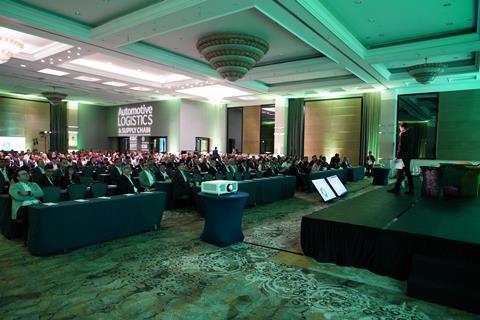
We are live on day 1 of the ALSC Mexico 2024 conference! Today, attendees will engage in a dynamic program of keynote speeches, panel discussions, and interactive workshops exploring topics critical to our industry—from cross-border logistics and decarbonising transport to digital transformation, AI and electric vehicle supply chains.
Our chief content officer Christopher Ludwig opened the conference with a welcome note and gave us a quick rundown of the current automotive logistics landscape and the unpredictability in future. “2024 will be a record production year, surpassing pre-pandemic levels. We will see strong exports, investments in nearshoring and EVs, the domestic market has grown and changed in terms of import and export market,” he highlighted.
He highlighted that there will be questions about the present and future with potential changes in compliance and policies.
Additionally, we also ran an opinion poll with the audience on the challenges and future of Mexico’s automotive logistics landscape, nearshoring and the impact of the new US government. Click here for the polling results.
Come back for more as will continue to bring you live updates, insights from industry visionaries, and highlights of the key innovations driving competitive advantage in automotive logistics.
13th November
Navigating growth, trade shifts and logistics challenges
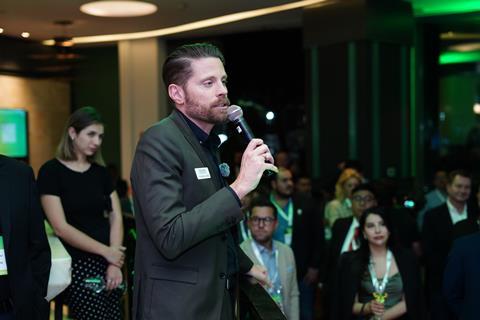
As the opening drinks reception kicked off at Automotive Logistics & Supply Chain Mexico 2024, industry leaders gathered to discuss the future of nearshoring, trade and growth. Christopher Ludwig, chief content officer of Automotive Logistics, shared some key insights into the pressing issues facing the industry. “We’re seeing new ports develop, new players entering the market and production levels exceeding pre-pandemic levels,” he noted. However, Ludwig emphasised that the logistics challenges that accompany this growth – such as capacity constraints and cross-border issues – remain a critical hurdle. “We’re still seeing a lot of logistics issues that need to be addressed if nearshoring and localisation are to increase.”
The conference agenda promises to dive deeper into these topics, with discussions on how Mexico can expand its production capacity amidst surging demand, and how evolving trade policies between Mexico and the US could impact the automotive supply chain. Stay tuned for more updates as the event unfolds.
Watch the drinks reception wrap up!
12th November
Kicking off with networking and insights on automotive supply chain growth
We are gearing up for an action-packed event on the 13th and 14th for our 10th ALSC Mexico conference happening in Mexico City. But before that, we will be kicking the event off with a Cocktail reception for a networking evening with our speakers and delegates!
Tomorrow, we will begin with sessions and keynotes with over 600 logistics and supply chain professionals, including leaders from North American and global carmakers, component suppliers, logistics providers, tech innovators, regulators, and key stakeholders who will share insights and build connections that will pave the way for collaborative discussions on Mexico’s role in automotive logistics and supply chain growth. Stay tuned!
We still have our registration open if you would like to join the conference!
12th November
US-Mexico automotive supply chain facing new uncertainties following election
The recent US presidential election is sure to be a hot topic both on and off stage at ALSC Mexico this year.
Following the announcement that Donald Trump has won the 2024 US presidential election, the North American automotive supply chain has been plunged into further uncertainty and unpredictability.
Mike Wall, executive director, automotive analysis at S&P spoke to Automotive Logistics about the upcoming changes to expect in legislation and tariffs, and the USMCA review due in 2026.
8th November
Mexico records vehicle production and export increase
Mexico’s National Institute of Statistics and Geography (Inegi) has reported that vehicle production between January and October this year has reached more than 3.4m vehicles, with 2.9m of that figure exported, an increase in exports over 2023 of +6.8%. Light trucks accounted for just over 76% of total production.
The 12 major automakers with manufacturing plants in Mexico produced the largest volume of vehicles since 2005 and plant capacity stood at 95%. That is supported by a booming localised tier one supplier sector that contributes to the automotive industry accounting for almost 22% over overall manufacturing GDP.
The Mexican Association of the Automotive Industry (AMIA) said it anticipated reaching the historic export record of 3.45m vehicles set in 2018 if the trend held to the end of the calendar year.
In October, 122,051 light vehicles were sold in Mexico, which represents an increase of +7% compared to the same month in 2023, while exports were up by +5% in the month to 332,356 units.
Between January and October domestic sales hit 1.2m vehicles.
Inegi has collected information from 23 companies affiliated with the Mexican Association of the Automotive Industry (Amia), as well as four non-affiliated companies.
“October’s export figures are the strongest since 2005, and we anticipate potentially reaching the historic export record of 3.45 million vehicles set in 2018 if current trends hold through November and December,” said Odracir Barquera, director general of Amia.
GM led the production increase with an output of almost 746,400 vehicles in the first ten months of the year, followed by Nissan, Stellantis and Ford (see table).
However, there were sizable production losses for Audi (-17.5%), BMW (-14%) and Toyota (-15%).
Chinese carmaker JAC made more than 20,000 vehicles in Mexico over the period, an 11.9% increase over January-October 2023.
Top ten vehicle makers in Mexico Jan-Oct 2024 |
|
|
GM |
746, 393 (+22%) |
|
Nissan |
575, 366 (+9.8%) |
|
Stellantis |
358 481 (-9.8%) |
|
Volkswagen |
340 205 (+13.6%) |
|
Ford |
336 139 (+9.3%) |
|
Kia |
225, 900 (+4.3%) |
|
Toyota |
201 670 (-15.4%) |
|
Mazda |
176, 787 (+4%) |
|
Honda |
166 683 (+19.6%) |
|
Audi |
126,518 (-17.5%) |
8th November
We recently wrote about how the US election could affect Mexico’s automotive logistics and supply chain, particularly in light of the USMCA (United States-Mexico-Canada Agreement).
The USMCA’s stricter rules of origin are meant to encourage more manufacturing within North America. However, potential changes in US trade policies might disrupt Mexico’s key role in this ecosystem. For instance, the prospect of tariffs or stricter import requirements could push manufacturers to reconsider their production strategies.
A key concern is how these potential shifts would impact nearshoring efforts. As one industry expert notes, “Mexico has become a crucial player in nearshoring for North America, and any changes to trade agreements will have far-reaching consequences on production and logistics strategies.”
Additionally, automakers such as Tesla have delayed expansion plans in Mexico, citing uncertainty around future trade regulations. This uncertainty underscores the broader concern that the upcoming US administration might reshape policies in ways that affect investment and logistics operations in Mexico’s automotive sector.
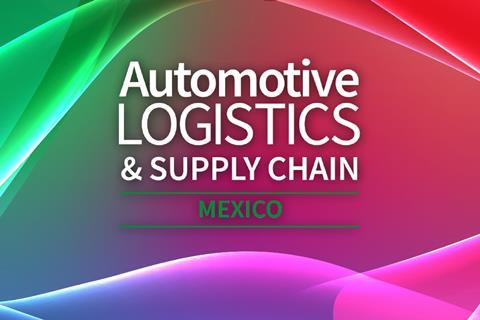
Experts from Toyota, BMW, Nissan, Volkswagen, Audi, GM, and more gathered at the Hotel Marquis Reforma in Mexico City to discuss key topics in inbound logistics, finished vehicle distribution, service parts, warehouse management, plant logistics, and more. The event also addressed the broader impact of the US election on supply chain dynamics, the rise of nearshoring, and the ongoing growth of the automotive industry in Mexico.
Topics
- AI & Predictive Analytics
- ALSC Mexico 2024
- Cross-Border Logistics
- Digitalisation
- Electric Vehicles
- Emergency logistics
- features
- Finished Vehicle Logistics
- Inbound Logistics
- Kaizen & Continuous Improvement
- Lean Logistics
- Logistics service provider
- Mexico
- Nearshoring
- Nearshoring Strategies
- News
- News and Features
- North America
- OEMs
- Plant Logistics
- Policy and regulation
- Ports and processors
- Purchasing
- Rail
- Region
- Road
- Short sea
- Suppliers
- Track-and-trace
- Trade & Customs
- Transport Management Systems & Warehouse Management Systems






























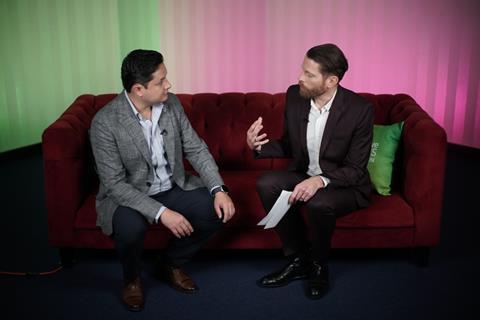
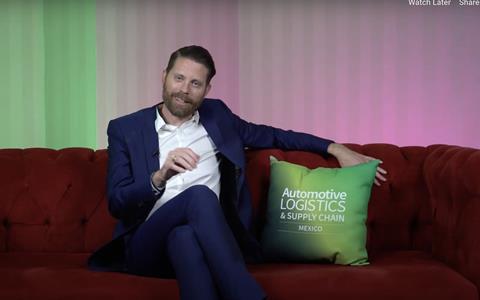



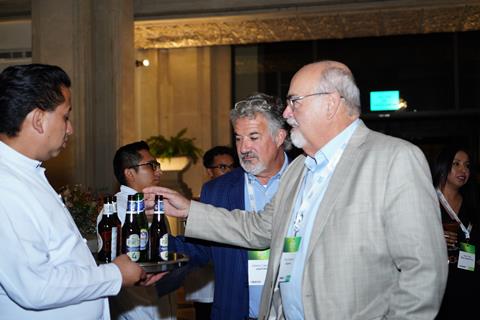
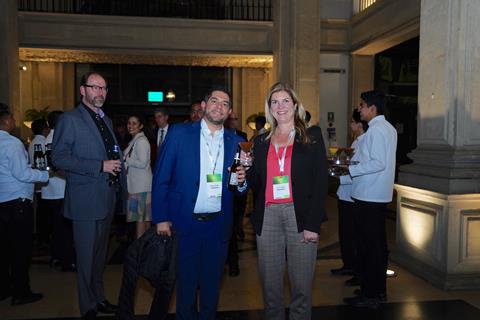



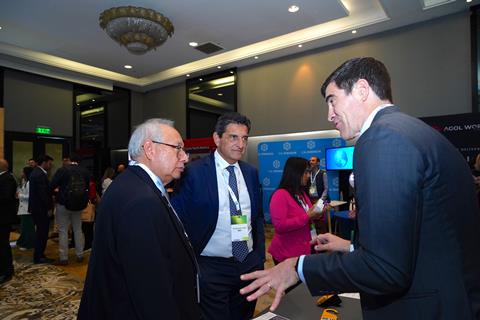
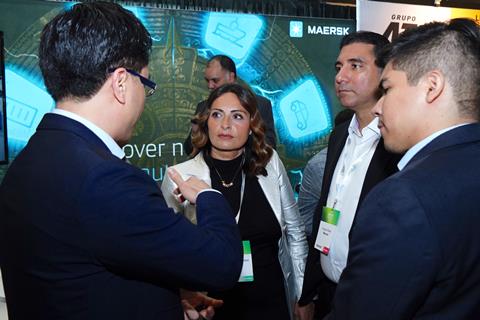
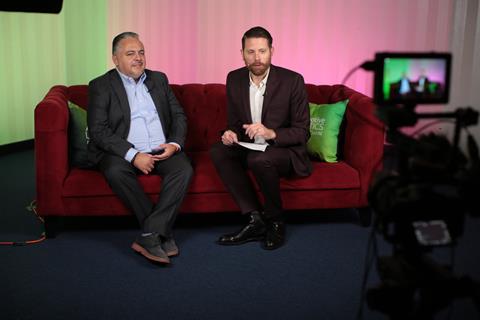

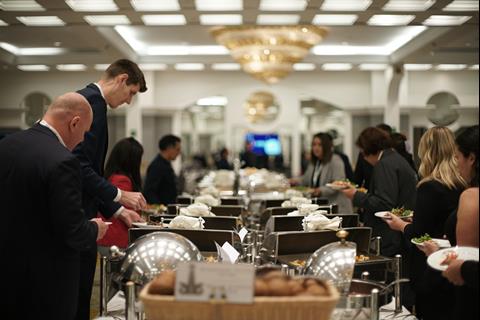
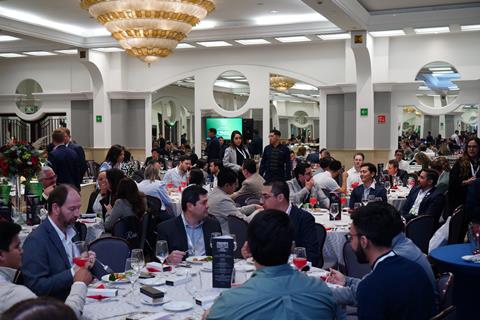


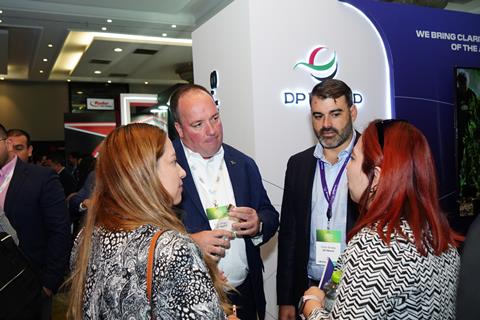

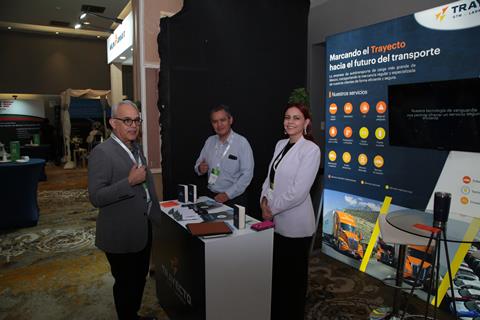


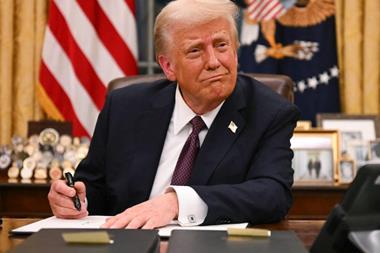
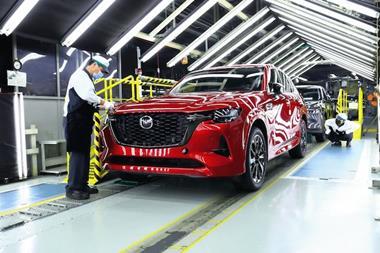
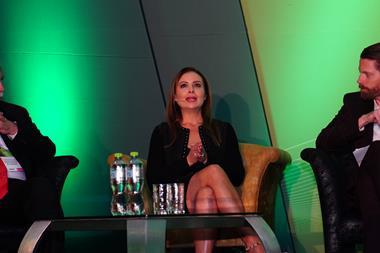
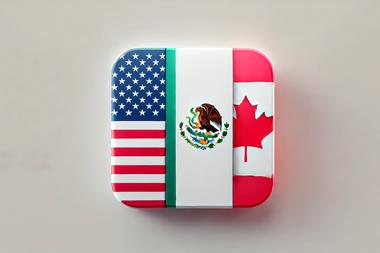
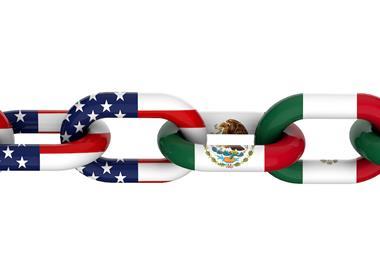



No comments yet